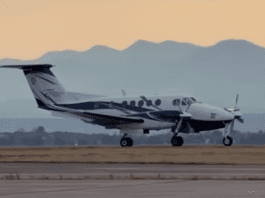This post is also available in:
 עברית (Hebrew)
עברית (Hebrew)
A solar-powered aircraft that was developed and designed in Hampshire, UK, has successfully completed its first high-altitude flight into the stratosphere, which lasted 24 hours.
The unmanned aircraft is called Phasa-35, has the wingspan of an airliner, and is intended for surveillance and communications use. It was developed and designed by the UK company Prismatic and climbed above 20,000 meters during its test flight.
Dave Corfield, the CEO of Prismatic has said that the team had “done something absolutely fantastic”, and added “I think people are amazed that a small company like this in Alton (a city in the UK) can come up with this level of technology. It’s an aviation first.”
According to the BBC, the aircraft’s name “Phasa-35” is short for Persistent High Altitude Solar Aircraft and refers to its 35-meter wingspan. Prismatic says it weighs just 150kg and can remain in the air for up to a year.
The Prismatic company, which has only 60 people on its staff, took just two years to design and build the solar-electric aircraft before its first flight in 2020.
The company was bought in 2019 by BAE Systems and has worked with the Met Office, Piran Composites, battery developer Amprius, and others to make its vision a reality.
Ben Hilton, a mission crew member had said: “People have spent years of their lives putting everything they can into getting this thing airworthy.”
What makes this aircraft work are solar panels that power the electric motors during daylight hours and simultaneously charge the batteries that keep it flying through the night.
The Phasa-35 is designed to bridge the gap between conventional aircraft and expensive space satellites and provide a platform for military and civilian surveillance and communications.
Prismatic has stated that its next step is to build more aircrafts and continue flight trials with the aim of breaking altitude records.
This information was provided by the BBC.




